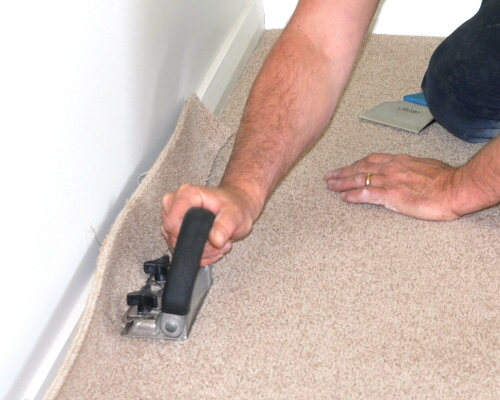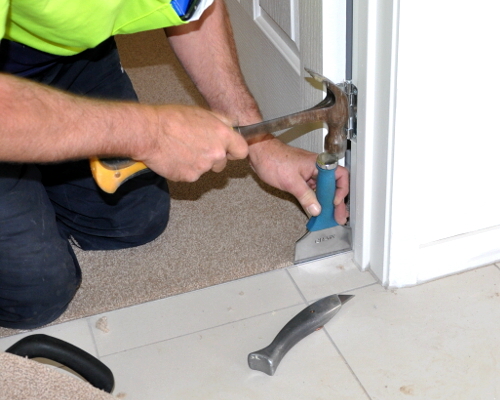Trimming in
 Audio for slide 1 (mp3 |6|KB)
Audio for slide 1 (mp3 |6|KB)
Once the carpet has been stretched and secured onto the gripper strip right around the room, you can trim it in.
The most efficient combination of tools for this job is a wall trimmer, utility knife and stair tool.
Check that the blades are sharp before you start.
Remember, it's easier, quicker and safer to use sharp blades, and to either sharpen or replace them before they become too dull to cut properly.

 Audio for slide 2 (mp3 |6|KB)
Audio for slide 2 (mp3 |6|KB)
The basic process is as follows:
- Set the wall trimmer to trim the carpet at about 5 mm over the required dimension
- Begin the trimming cut at the top edge of the carpet where it is lapped up on the wall. You can use a utility knife to start the cut.
- Cut down from the top edge until the trimmer base is flat on the carpet, and then run along the wall.
- Tuck in the 5 mm over-length into the gully between the wall and gripper strip. You can either use a stair tool or the trimmer itself - the outrigger or flat bar portion of the wall trimmer is made for this purpose.


Industry Network Training and Assessment Resourses
© 2023 Workspace Training





